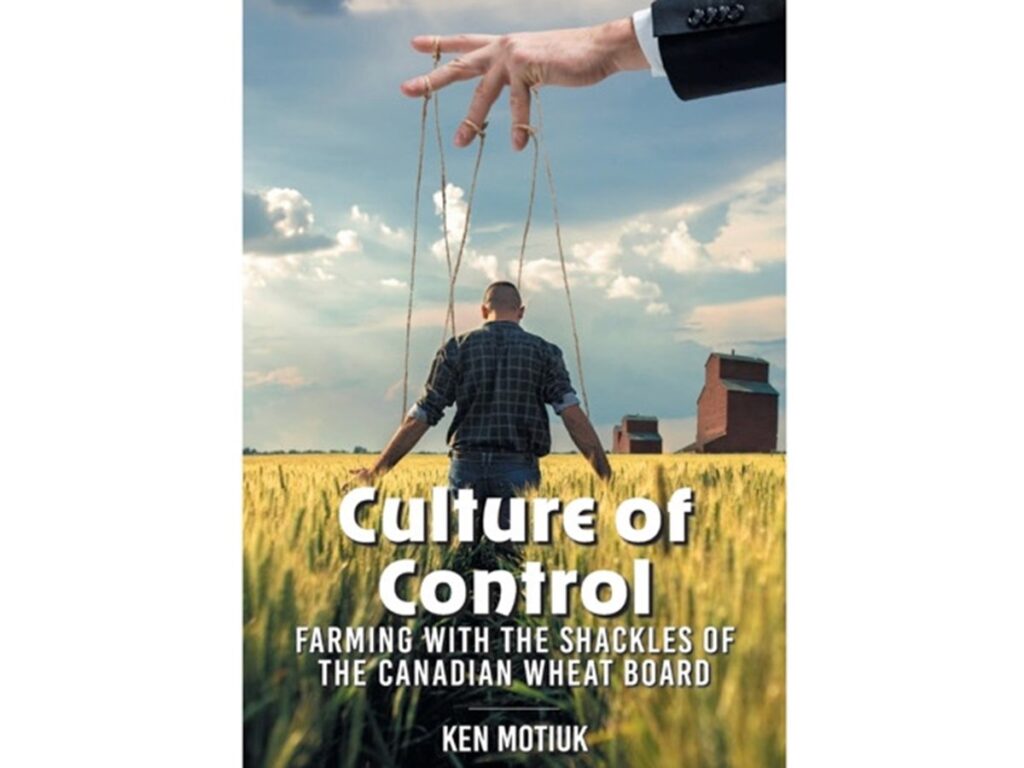Farmer shares his perspective on Canadian Wheat board demise

WINNIPEG — The lockdowns and loneliness of the COVID-19 pandemic was a difficult time for many Canadians, but it also produced some unexpected results.
In the case of Ken Motiuk, a grain farmer from Mundare, Alta., he wrote a book about Canada’s grain industry and the Canadian Wheat Board.
The book was partially inspired by COVID boredom but also by pandemic-era conversations with the young employees at Motiuk’s farm.
Read Also


Sclerotinia-resistant canola varieties may be in the cards
A San Diego company is closer to commercializing a trait that could protect canola from sclerotinia.
“(It was) one of the cold days of the … winter in the shop,” said Motiuk.
“One of them asked me, ‘what about this Canadian Wheat Board that we hear about every now and then?’ ”
Motiuk realized that the CWB is now history, which someone needed to document.
So he wrote a book, sharing the perspectives of someone who worked from the inside and outside to de-regulate Canada’s grain industry.
In April, Friesen Press published Motiuk’s book, Culture of Control: Farming with the shackles of the Canadian Wheat Board.
“In the book … Ken Motiuk has done a terrific job in describing the history and impact of one of the most controversial institutions imposed upon the Canadian agricultural industry over the last 100 years,” Lee Hart, former field editor for Grainews and Country Guide, wrote in the book’s foreword.
Motiuk, who is semi-retired, now helps his daughter and son-in-law run a 13,000 acre grain farm about 80 km east of Edmonton.
But from the late 1970s to the 2010s, Motiuk was deeply involved in the grain industry. He served as director on boards for United Grain Growers, the Western Canadian Wheat Growers Association and multiple other organizations.
During the long days of COVID, Motiuk began writing down his experiences in western Canadian agriculture and his involvement in the grain industry.
“I (thought) people needed to know the history,” he said in an interview.
“I also wanted to tell the story to our four daughters, (explaining) why I was never at home when they were growing up.”
In the 2000s and early 2010s, former agriculture minister Gerry Ritz appointed Motiuk to sit as a wheat board director.
At the time, 10 of the 15 CWB directors were elected by farmers. The remaining five were appointed by Ritz, who wanted to dismantle the board’s marketing monopoly on sales of wheat and barley in Western Canada.
That finally happened in 2012 when the Marketing Freedom for Grain Farmers Act came into force, allowing farmers to “contract their wheat and barley to the buyer of their choice,” says a federal government release from Aug. 1, 2012.
After attending the University of Alberta, Motiuk returned to the family farm in the mid-1970s. Almost immediately, he was frustrated by the wheat board and its control over the grain trade. At the time, global grain prices were strong because of the Great Grain Robbery.
However, prairie farmers couldn’t take advantage of the pricing opportunity, Motiuk said.
“Grain prices had totally ballooned … but we (couldn’t) sell grain.”
In the book, Motiuk shares the history of what happened in western Canadian agriculture before he started farming in the 1970s.
That includes the construction of the Canadian Pacific Railway, the settlement of the West and the emergence of the grain industry.
“Building federal terminals, the rise of the Pool movement, the wheat board,” Motiuk said.
“Before you can understand why we (had) to de-regulate … you have to understand how we got here.”
A percentage of Prairie farmers would argue that the grain industry didn’t need to de-regulate and that the elimination of the wheat board was a mistake.
But those stories have been told.
Motiuk wanted to share a different perspective in his book — that Prairie farmers and Canada’s grain industry have thrived because the wheat board no longer exists.
“Farmers forward contracting their grain, planning what their cash flow is … farmers now control their own businesses,” he said.
“Nobody has told the success story of the de-regulation of the system. It’s been just a massive success.”
Contact robert.arnason@producer.com
Source: producer.com


